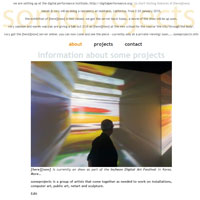 Information about some projects by Marek Walczak, Martin Wattenberg, Rory Solomon, Wesley Heiss, Johanna Kindvall and others will now be documented at1 http://someprojects.info….
Information about some projects by Marek Walczak, Martin Wattenberg, Rory Solomon, Wesley Heiss, Johanna Kindvall and others will now be documented at1 http://someprojects.info….
- test [↩]
MW2MW is a collaboration between Marek Walczak and Martin Wattenberg. Started in 1997, both artists work independently but come together on long term projects such as Apartment, Wonderwalker, Thinking Machine and Noplace.
 Information about some projects by Marek Walczak, Martin Wattenberg, Rory Solomon, Wesley Heiss, Johanna Kindvall and others will now be documented at1 http://someprojects.info….
Information about some projects by Marek Walczak, Martin Wattenberg, Rory Solomon, Wesley Heiss, Johanna Kindvall and others will now be documented at1 http://someprojects.info….
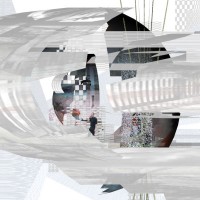 [here][now] is an installation and Internet artwork that investigates the limits of patience and space in a multi-user virtual 3D environment. The project draws comparisons between technological progress and geographical exploration, implicitly hinting at an equivalence between forgotten geographies and outmoded technologies.
[here][now] is an installation and Internet artwork that investigates the limits of patience and space in a multi-user virtual 3D environment. The project draws comparisons between technological progress and geographical exploration, implicitly hinting at an equivalence between forgotten geographies and outmoded technologies.
[here][now] will premier at the Incheon Digital Art Festival 2009 in Korea on August 7th 2009.
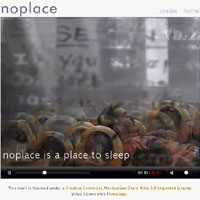 Noplace Online has launched as part of the Tate’s Intermedia series.
Noplace Online has launched as part of the Tate’s Intermedia series.
Whether paradise, heaven or a pessimistic distopia, each of us has a vision like no place on Earth. In noplace you write a few words about that place that has not yet come into being. As your write, your words trigger a set of visual associations, colliding to form a video of your ideal.
LAUNCH
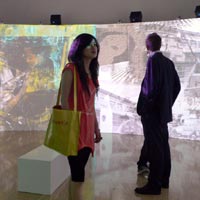 Noplace Installation premiered as part of Synthetic Times in Beijing, running from June 9 – July 3, 2008. More images from the installation are here
Noplace Installation premiered as part of Synthetic Times in Beijing, running from June 9 – July 3, 2008. More images from the installation are here
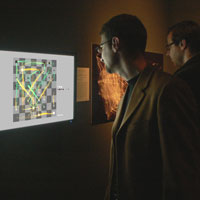 We are pleased to announce that Thinking Machine is currently installed as part of Design and the Elastic Mind at the Museum of Modern Art, New York. The exhibition will run from February 24th to May 12th 2008.
We are pleased to announce that Thinking Machine is currently installed as part of Design and the Elastic Mind at the Museum of Modern Art, New York. The exhibition will run from February 24th to May 12th 2008.
More on Thinking Machines here.
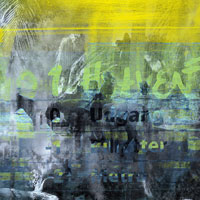 If you are in Amsterdam on Friday 19th October we invite you to the opening of Video Vortex at the Netherlands Media Art Institute
If you are in Amsterdam on Friday 19th October we invite you to the opening of Video Vortex at the Netherlands Media Art Institute
Where we will be showing our work:
Noplace : Heaven
You may enjoy some screengrabs of the piece.
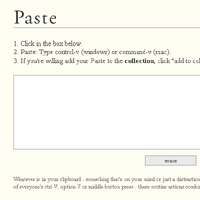 Whatever is in your clipboard, something that’s on your mind or just a distraction, you Paste. Paste keeps track of everyone’s ctrl-V, option-V or middle-button press – these routine actions combine into a single text stream.
Whatever is in your clipboard, something that’s on your mind or just a distraction, you Paste. Paste keeps track of everyone’s ctrl-V, option-V or middle-button press – these routine actions combine into a single text stream.
Paste collects both trivial and profound thoughts creating a continuous scroll. The minutia of collective consciousness forms a shared narrative. A narrative that reflects personal and public history – from the horrors of war to a recipe for mashed potatoes.
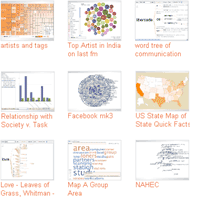 Many Eyes is a bet on the power of human visual intelligence to find patterns. Our goal is to “democratize” visualization and to enable a new social kind of data analysis.
Many Eyes is a bet on the power of human visual intelligence to find patterns. Our goal is to “democratize” visualization and to enable a new social kind of data analysis.
All of us in CUE‘s Visual Communication Lab are passionate about the potential of data visualization to spark insight. It is that magical moment we live for: an unwieldy, unyielding data set is transformed into an image on the screen, and suddenly the user can perceive an unexpected pattern.
 Everyone who has lived in an apartment has a story to tell. Gothamberg is a place to read, interact and exchange stories of lives in apartment buildings. Together, these tales of sounds and smells, lobbies and bathrooms, laundry room gossip and unexpected favors form a single collective building, Gothamberg. Their experiences form the elliptical threads of inhabitation, a mnemonic quality expressing something of the shared nature of dwelling.
Everyone who has lived in an apartment has a story to tell. Gothamberg is a place to read, interact and exchange stories of lives in apartment buildings. Together, these tales of sounds and smells, lobbies and bathrooms, laundry room gossip and unexpected favors form a single collective building, Gothamberg. Their experiences form the elliptical threads of inhabitation, a mnemonic quality expressing something of the shared nature of dwelling.
 This site specific artwork at the Cooper Hewitt National Design Museum’s 2006 Design Triennial is situated in front of a window facing the garden. It explores the reciprocal relationship between garden and interior, by reinterpreting the idea of window as a luminous and temporal information threshold.
This site specific artwork at the Cooper Hewitt National Design Museum’s 2006 Design Triennial is situated in front of a window facing the garden. It explores the reciprocal relationship between garden and interior, by reinterpreting the idea of window as a luminous and temporal information threshold.
Once a day a camera adjacent to the main entrance to the garden, records a 30 second film segment of the tree canopy along the back edge of the garden. This cumulative sequence is stored in a computer and played back on the 6ft x 3ft plane of Light Emitting Diode circuit boards. A larger 9ft x 5ft acid etched plane placed between the viewer and the LEDs resolves the pixilated abstractions presented by the LEDs. Meanwhile the compressed nature of the sequence reveals the temporal nature of the garden as it is transformed by the seasons.
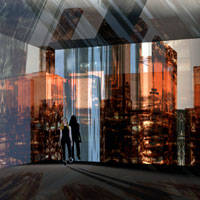 Noplace is an interactive installation and website that aggregates utopias into a shared vision of paradise. We are developing software that collects data, images, and texts via the web and uses these feeds to create virtual architectural structures. These structures expand as utopias are added to the project. In the final installation, projected shadows on the gallery walls represent the architecture that’s evolved from the data, creating a physical browser which viewers can manipulate and transform with a wave of their hands.
Noplace is an interactive installation and website that aggregates utopias into a shared vision of paradise. We are developing software that collects data, images, and texts via the web and uses these feeds to create virtual architectural structures. These structures expand as utopias are added to the project. In the final installation, projected shadows on the gallery walls represent the architecture that’s evolved from the data, creating a physical browser which viewers can manipulate and transform with a wave of their hands.
Noplace has won a Creative Capital Award and is currently under development. More…
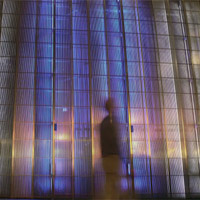 The Podium Light Wall is located on the South and North facades of 7 World Trade Center. As people wander on the pavement below a strip of blue light gracefully follows them. This strip of blue light is 7 floors tall and is visible from Freedom Park. The Podium Wall accentuates the individual, and the patterns that are created as many pass by together. Kinecity designed the interactive element of the design for James Carpenter Design Assoc. who were the responsible for the wall as an art piece.
The Podium Light Wall is located on the South and North facades of 7 World Trade Center. As people wander on the pavement below a strip of blue light gracefully follows them. This strip of blue light is 7 floors tall and is visible from Freedom Park. The Podium Wall accentuates the individual, and the patterns that are created as many pass by together. Kinecity designed the interactive element of the design for James Carpenter Design Assoc. who were the responsible for the wall as an art piece.
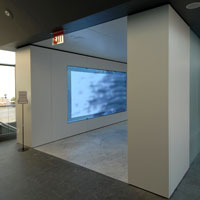 The Shimmer Wall is located in the link between the two buildings of the Museum of Jewish Heritage in New York City. A place of contemplation designed by James Carpenter Design Associates, the wall projects the subtle shimmering light as the sun plays with the Hudson River.
The Shimmer Wall is located in the link between the two buildings of the Museum of Jewish Heritage in New York City. A place of contemplation designed by James Carpenter Design Associates, the wall projects the subtle shimmering light as the sun plays with the Hudson River.
Kinecity have designed the camera recognition system that recognizes the shimmer on the water. Moving and zooming throughout the day on a very slow orbit, the artificial intelligence system tracks the beauty of light reflecting off water, through which on occasion a ferry or yacht passes by.
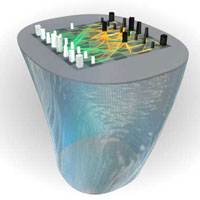 Thinking Table 4 is currently on exhibit at the Banff Center in Canada as part of the show The Art Formerly Known as New Media. In this version two players play against each other using a touchscreen.
Thinking Table 4 is currently on exhibit at the Banff Center in Canada as part of the show The Art Formerly Known as New Media. In this version two players play against each other using a touchscreen.
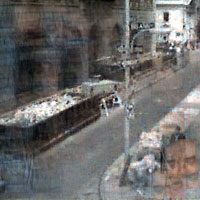 CityCollage creates a leisurely, painterly image of a single second. Your image is used as a palette that echoes the sampling of the artist’s eye. CityCollage takes your photo and uses it to build a streetscape. You become the raw material for an urban construction. As in a city, your own presence is tangential, one ingredient among many. You may not even see yourself, until a sudden moment of recognition, like spotting a familiar face in a crowd.
CityCollage creates a leisurely, painterly image of a single second. Your image is used as a palette that echoes the sampling of the artist’s eye. CityCollage takes your photo and uses it to build a streetscape. You become the raw material for an urban construction. As in a city, your own presence is tangential, one ingredient among many. You may not even see yourself, until a sudden moment of recognition, like spotting a familiar face in a crowd.
Two cameras are trained on two views, one on the street, one in a private space at the installation. Each time movement is detected in the private sphere, a new streetscape is created.
Citycollage was part of the show ‘Urbanisms‘ at the Pace Digital Gallery. More…